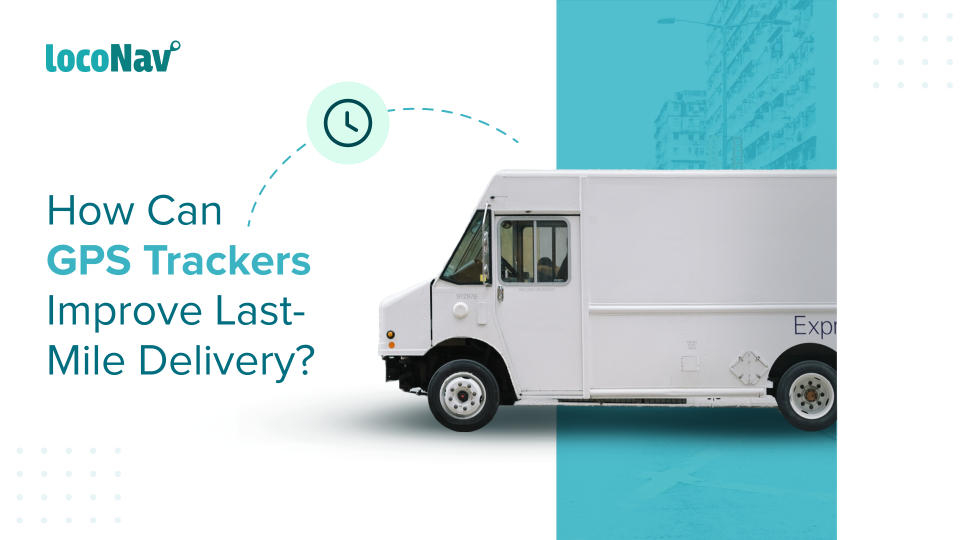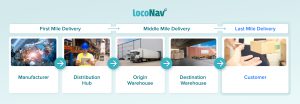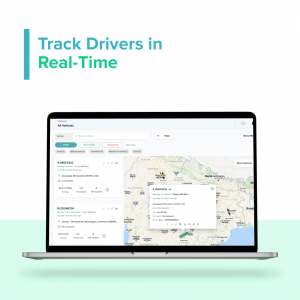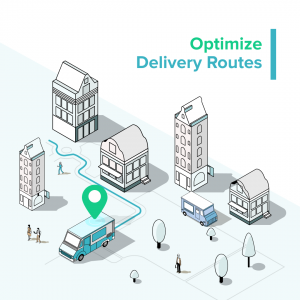

Customers want whatever they want, and they want it now. Companies must develop new and innovative ideas to improve upon their last-mile delivery model and exceed client expectations in order to keep their business.
Despite the fact that retail powerhouses like Amazon and Flipkart appear to have inexhaustible resources, smaller businesses must compete with them to stay afloat. Last-mile delivery can be complicated for a number of reasons, so getting it just right is critical.
Check the live location of your vehicle with LocoNav’s Vehicle Tracking System!
What Is Last-Mile Delivery?
The final step of the supply chain is referred to as last-mile delivery. The journey of a product from a storehouse to the customer’s doorstep is the most important step in the delivery process, and it should be handled carefully to ensure prompt delivery.
Today, logistics is often the sole point of contact between a buyer and a brand, making the final mile crucial. It has an impact on the customer’s last-mile experience as well as profitability.

Here’s how vehicle tracking can transform last-mile delivery operations:
Automate Delivery Status Updates
Customers will be notified as soon as feasible if their delivery is delayed by automating delivery status adjustments. This is another example of how keeping customers informed can help you meet their delivery expectations. It’s bad enough when an item arrives late, but it’s even worse when the consumer isn’t informed about the delay.
Track Drivers in Real-Time 
Offering consumers real-time tracking could make them happier and minimize the effort of customer support staff. Buyers receive a driver monitoring link that allows them to track their driver in real-time.
Consumers can track their packages using hardware units in their vehicles, which use the same technology as route planning software. Customer care calls are also anticipated to reduce when customers can follow their deliveries in real-time.
Analyze Historical Information
Information from previous shipments, such as preferred timings for buyers to receive deliveries or routes with reduced traffic, could be significant in identifying potential for last-mile delivery improvement.
You may strategize last-mile deliveries depending on your customers’ preferences and establish the most cost-effective path for your organization by analyzing data from previous distributions, routes, or consumer locations.
Reduce Operational Cost
You can finally streamline your business by analyzing your fleet in real-time, keeping your vehicles in good condition, and assisting your driver-partners to improve their driving behavior. How? With improved control over superfluous expenditures, which leads to cost savings whenever possible. Isn’t this, after all, one of the most crucial priorities of every successful last-mile delivery company?
Optimize Delivery Routes
 Indirect routes entail considerable delays and higher fuel and idling costs when it concerns last-mile delivery. You may identify the most effective delivery schedule by optimizing your fleet’s shipping routes, which leads to time and cost savings, excellent service to customers, and more favorable delivery experiences.
Indirect routes entail considerable delays and higher fuel and idling costs when it concerns last-mile delivery. You may identify the most effective delivery schedule by optimizing your fleet’s shipping routes, which leads to time and cost savings, excellent service to customers, and more favorable delivery experiences.
The last-mile delivery industry is expanding as consumer demand grows, and fleet managers must precisely manage the collection, shipping, and last-mile process management to provide outstanding customer service while maintaining fleet efficiency. This management also entails keeping a close eye on transfers, drivers, cars, and service offerings, as well as executing effective route management.